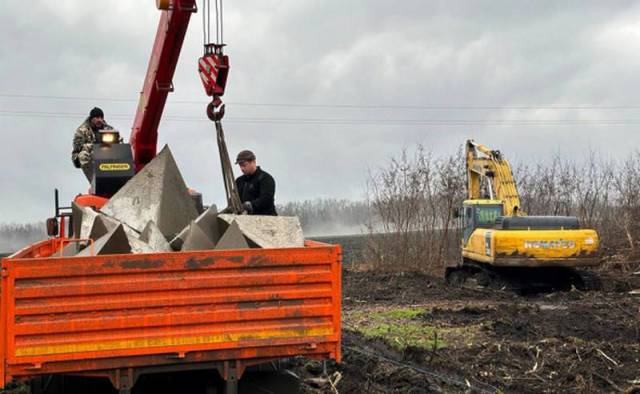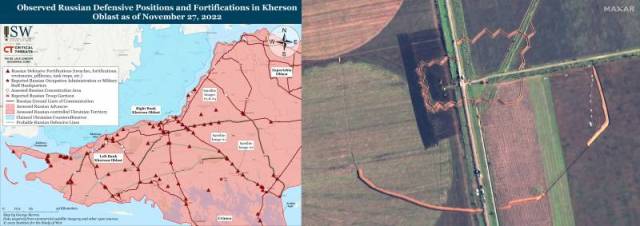
Image source: topwar.ru
After the withdrawal from Kherson, Russian troops are creating a new defensive line on the left bank of the Dnieper. At the same time, American analysts doubt its ability to restrain the onslaught of the APU, including due to the shortcomings made during the construction of the protective "shaft".
As noted in a study by the Institute for the Study of War (USA), the Russian Armed Forces have been working on defense equipment in the eastern part of the Kherson region, in the Crimea, on the Kinburnskaya Spit and near it since the beginning of October. As follows from satellite images, troops are digging trenches, erecting strong points, placing anti-tank hedgehogs along roads, making earthen ramparts, creating a layered protection network. A reserve defensive line has been created behind the frontline positions.
- the study says.
As stated, most of the field fortifications are located along roads and look more like separate powerful roadblocks than extended fortified areas. The placement of strong points at the highways indicates that the APU is expected to advance along highways, and not over rough terrain. Only a few defensive positions have been created in the fields. The authors of the study suggest that this is a weak point of the Russian defense:

Image source: topwar.ru
As a result, according to American analysts, the units of the Armed Forces of the Russian Federation, entrenched in defense along the highways, may be surrounded. This is facilitated by the open flanks of the strongholds, many of them are scattered from each other, not allowing mutual support. Anti-tank hedgehogs are installed directly on the roads, but do not extend into the fields, which makes it possible to bypass them.
- the conclusion is made by American analysts.
